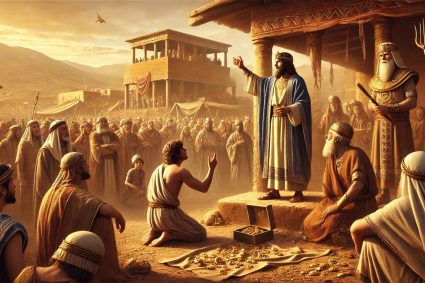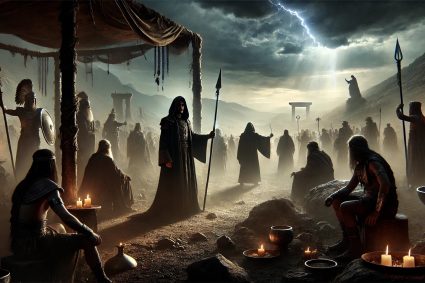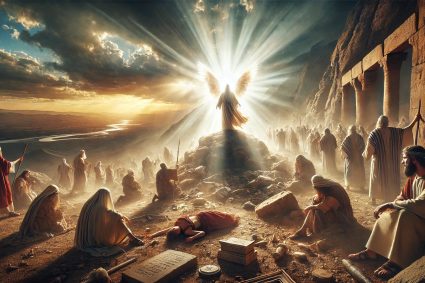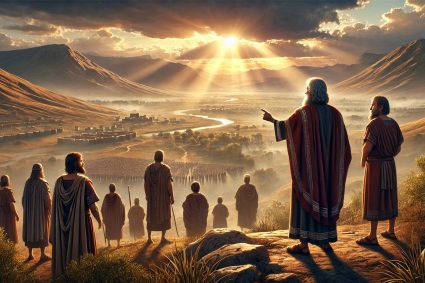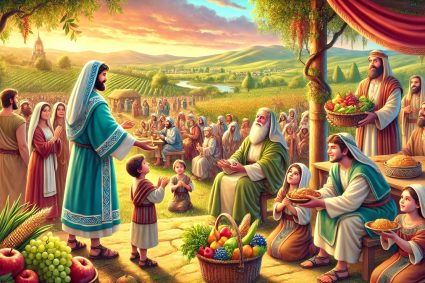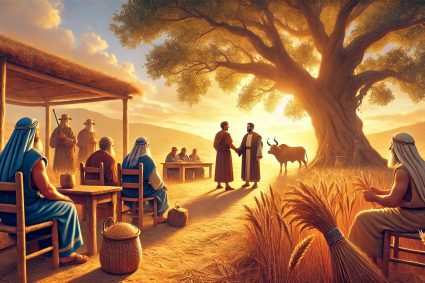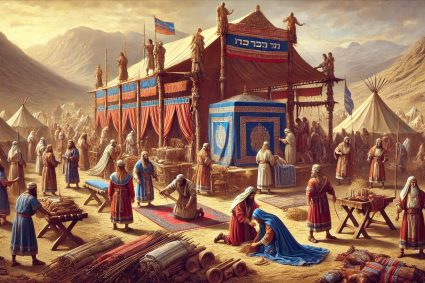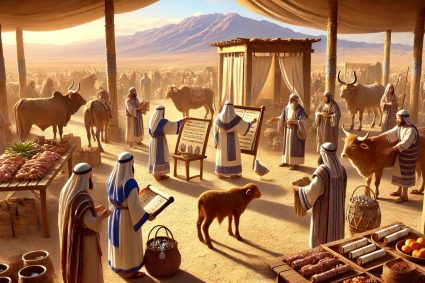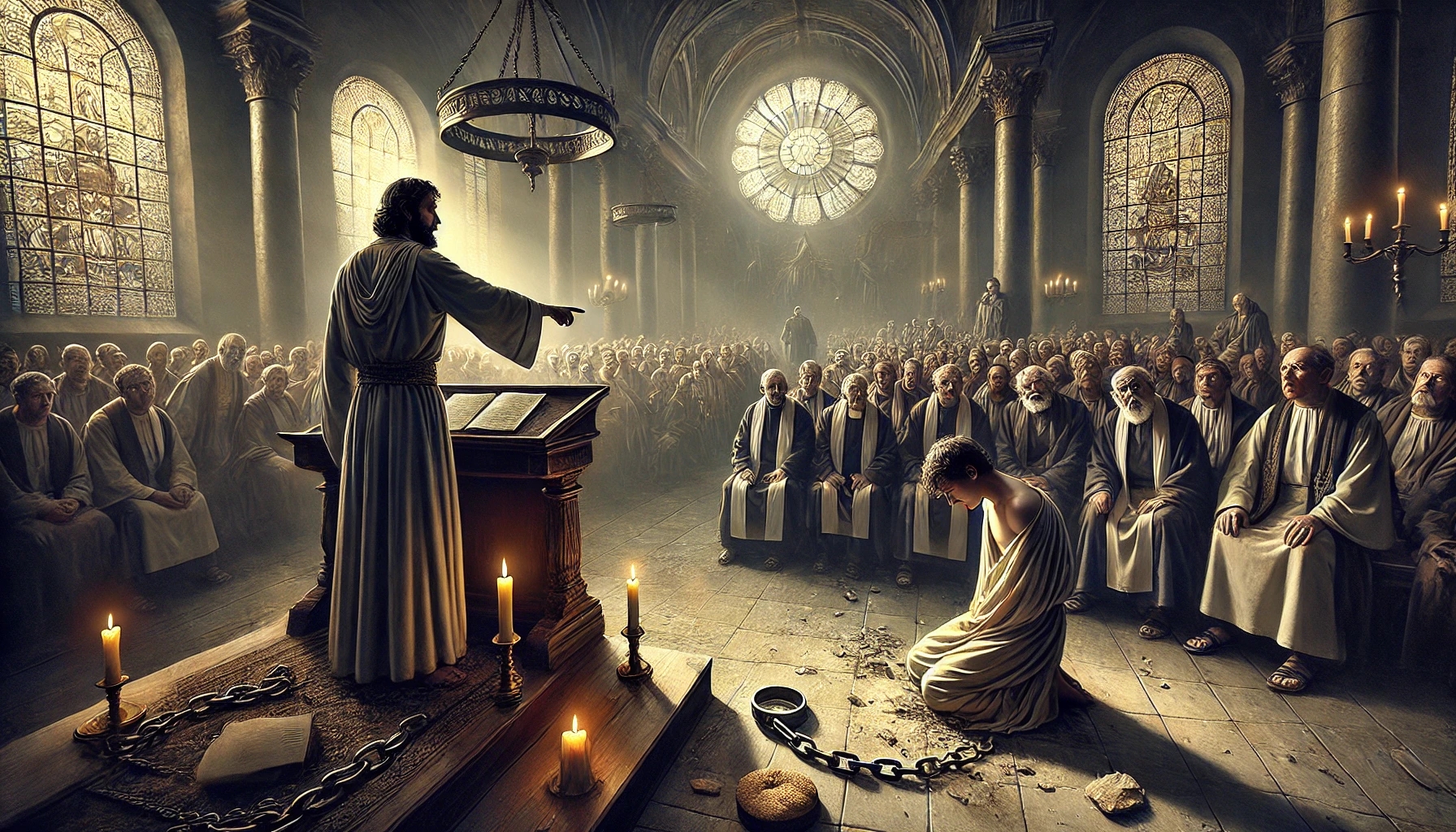
December 15, 2024
DAILY BIBLE READING – 1 Corinthians Chapter 5
1 It is reported commonly that there is fornication among you, and such fornication as is not so much as named among the Gentiles, that one should have his father’s wife.
2 And ye are puffed up, and have not rather mourned, that he that hath done this deed might be taken away from among you.
3 For I verily, as absent in body, but present in spirit, have judged already, as though I were present, concerning him that hath so done this deed,
4 In the name of our Lord Jesus Christ, when ye are gathered together, and my spirit, with the power of our Lord Jesus Christ,
5 To deliver such an one unto Satan for the destruction of the flesh, that the spirit may be saved in the day of the Lord Jesus.
6 Your glorying is not good. Know ye not that a little leaven leaveneth the whole lump?
7 Purge out therefore the old leaven, that ye may be a new lump, as ye are unleavened. For even Christ our passover is sacrificed for us:
8 Therefore let us keep the feast, not with old leaven, neither with the leaven of malice and wickedness; but with the unleavened bread of sincerity and truth.
9 I wrote unto you in an epistle not to company with fornicators:
10 Yet not altogether with the fornicators of this world, or with the covetous, or extortioners, or with idolaters; for then must ye needs go out of the world.
11 But now I have written unto you not to keep company, if any man that is called a brother be a fornicator, or covetous, or an idolator, or a railer, or a drunkard, or an extortioner; with such an one no not to eat.
12 For what have I to do to judge them also that are without? do not ye judge them that are within?
13 But them that are without God judgeth. Therefore put away from among yourselves that wicked person.
King James Version. Public Domain
Commentary
Introduction:
The fifth chapter of the First Epistle to the Corinthians addresses the handling of serious sin within the church. Paul deals with a case of sexual immorality that is even unacceptable by non-Christian standards. He admonishes the Corinthians not to be proud or indifferent but to decisively confront this sin in order to preserve the purity and holiness of the community. The chapter provides valuable insights into the necessity of spiritual discipline, the protection of the church, and the importance of holiness in Christian life.
Commentary:
Resolute Handling of Sin (Verses 1-5)
Paul speaks of an atrocious sin within the church: a man has his father’s wife. He criticizes the Corinthians for their pride and indifference instead of feeling sorrow and taking action. Paul urges the congregation to act in the authority of Christ and to expel the offender from the community. This drastic measure, “handing him over to Satan,” serves not only to cleanse the church but also aims to lead the sinner to repentance and spiritual salvation.
The Image of Leaven (Verses 6-8)
Paul uses the image of leaven to illustrate how a small sin can affect the entire community. Old leaven represents malice and sin that must be removed from the church to keep it “unleavened”—a symbol of holiness and purity. Christ, the sacrificed Passover Lamb, is the foundation of this purity, and the church is called to live in purity and truth.
Separation from Sinful Brothers (Verses 9-13)
Paul distinguishes between relationships with unbelieving sinners and those who call themselves Christians but continue in persistent sinful behavior. While contact with people outside the church is inevitable, Paul calls for the intolerance of sinful “brothers” to maintain the church’s purity. The exclusion of such a member is meant to protect the community and acknowledge the divine judgment reserved for those outside the church.
Summary:
In the fifth chapter of the First Epistle to the Corinthians, Paul urges the church to take decisive action against serious sin within its ranks. He emphasizes the community’s responsibility to preserve its purity and uses the image of leaven to illustrate the impact of sin. By excluding the sinner, not only is the church protected, but the individual is also led to repentance. Paul makes it clear that spiritual discipline is an expression of the church’s holiness and its responsibility before God. This chapter reminds believers to uphold the church’s holiness, observe the boundaries of tolerance, and live in purity and truth.
![]()

WEEKLY SPIRIT OF PROPHECY READING – Ellen White | The Desire of Ages
Chapter 80—In Joseph’s Tomb
Read online here
Commentary
Introduction:
Chapter 80 describes the final hours of Good Friday and the Sabbath, during which Jesus rests in the tomb after His crucifixion. This section highlights the significance of Jesus’ death and the rest in the tomb in relation to creation and redemption. At the same time, it establishes the symbolic connection between Jesus’ sacrificial death and the Sabbath rest. The chapter paints a profound picture of human sorrow, divine providence, and the priests’ efforts to suppress the memory of Jesus.
Commentary:
Jesus’ Rest in the Tomb and Its Significance Jesus’
Sabbath rest in the tomb mirrors God’s rest after creation. While creation was completed on the seventh day, Jesus’ rest symbolizes the completion of the redemptive work. This connection demonstrates that the cross is not only a place of suffering but also of triumph over sin. The Sabbath becomes a day of hope, pointing to the restoration of creation and eternal life.
Testimonies and Confessions After the Crucifixion
The words of the Roman centurion and the conversion of many spectators of the crucifixion serve as evidence that Jesus’ life and death had transformative power. The faith of Joseph of Arimathea and Nicodemus is highlighted in this chapter, as they courageously advocate for Jesus’ dignified burial despite their previous hesitations. This shows that Jesus’ death also moves hidden believers to take action.
The Priests’ Uneasy Conscience
Despite their apparent triumph, the priests are plagued by fear and doubt. Their efforts to seal and guard Jesus’ tomb reflect their uncertainty. Their attempt to prevent Jesus’ resurrection ultimately fulfills God’s plan and provides stronger evidence of His divinity.
The Testimony of Creation
Nature itself testifies to Jesus’ divinity: the darkness during the crucifixion, the earthquake, and the torn temple veil. These events underscore the significance of Jesus’ death and His connection to creation and the plan of redemption.
Summary:
Chapter 80 emphasizes the significance of Jesus’ rest in the tomb as a symbol of completed redemption and connects it with the Sabbath rest of creation. While Jesus’ enemies continue to try to suppress His influence, their actions ultimately provide evidence of His divinity. The chapter shows how Jesus’ death moves not only His disciples but also other witnesses of His crucifixion. The Sabbath following the crucifixion becomes a day of silence and reflection, harboring hope for the resurrection. The triumph of God over human plans and the glorification of His name are central themes of this chapter.
(Visited 31 times, 1 visits today)


